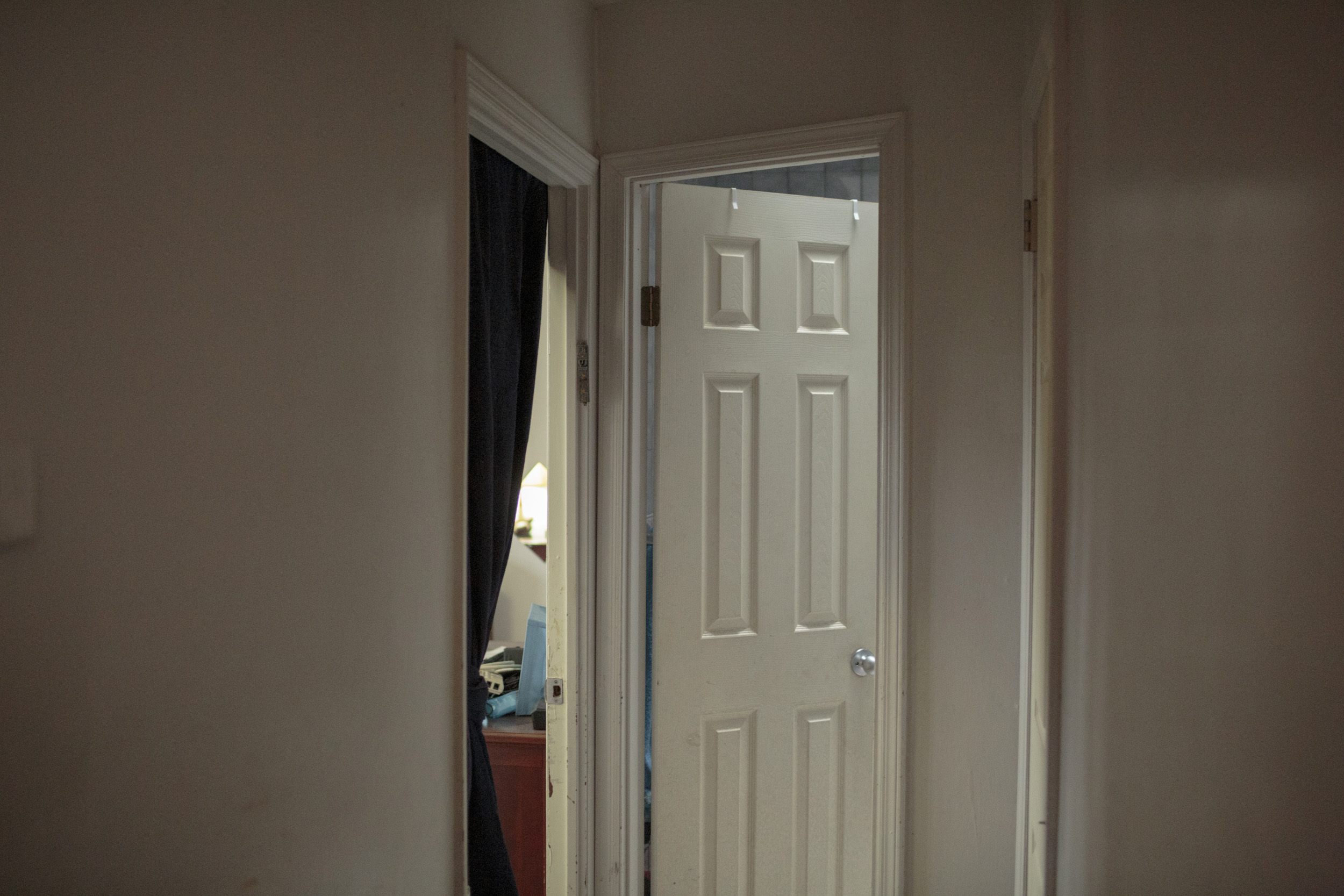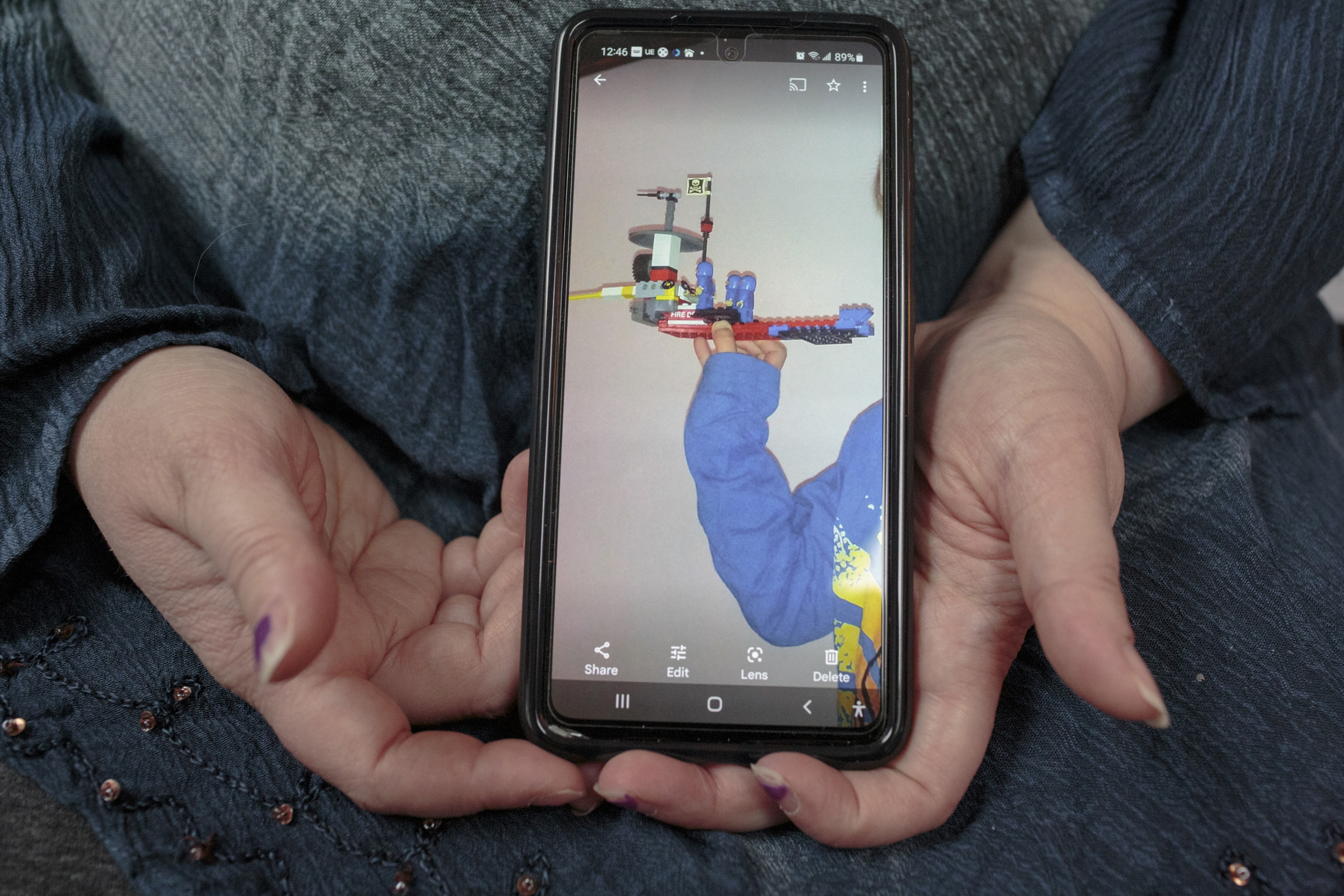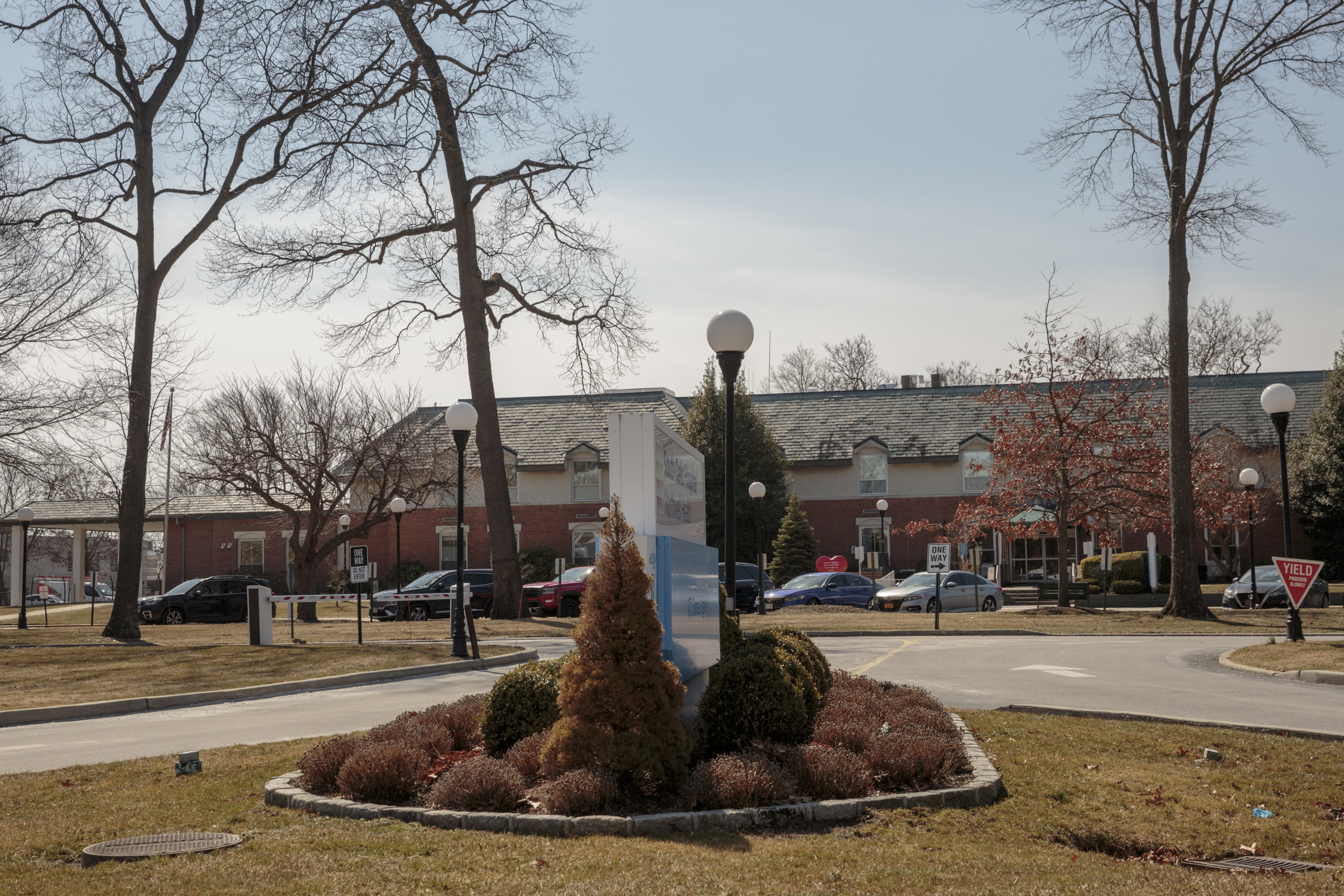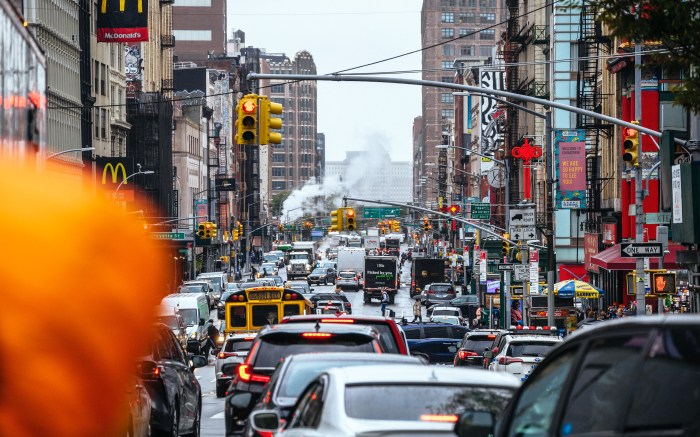By Abigail Kramer, THE CITY, photography by Sarah Blesener for ProPublica
This story was originally published by ProPublica. ProPublica is a Pulitzer Prize-winning investigative newsroom. Sign up for The Big Story newsletter to receive stories like this one in your inbox.
** This story contains descriptions of mental illness and self-harm.
Moshe was in the hospital for the fourth time, and his mother, Rae, was desperate.
It was the spring of 2021. Moshe was 12 years old, and he’d been admitted to a psychiatric unit for children at South Oaks Hospital, not far from his home on the North Shore of Long Island.
In itself, the hospitalization wasn’t a surprise. Moshe had tried to hang himself when he was 9 years old. Since then, he’d picked up a long list of mental health diagnoses, including ADHD, anxiety, major depressive disorder and a condition called oppositional defiant disorder. He’d been on and off an even longer list of medications, some of which just made his symptoms worse.
Moshe spent a lot of time feeling sad and worthless. Other times, his mood would swing to explosive and angry, with outbursts that Rae said grew increasingly scary as he got older and bigger. (Both Rae and Moshe are being identified by their middle names to protect their privacy.) Rae had spent years fighting for mental health services that were infuriatingly hard to get, though the family had good insurance.
In 2020, a few months into New York’s COVID-19 shutdowns, Moshe had landed in the hospital after threatening to kill himself and Rae. This time around, in 2021, he’d punched through a glass window and wouldn’t stop banging his head against a wall.
Almost as soon as Moshe arrived at South Oaks Hospital, his treatment team said he needed more help than they could offer. The best option, the doctors told Rae, was a mental health hospital operated by New York state called Sagamore Children’s Psychiatric Center.
Unlike private hospitals, where clinicians say the length of a standard psychiatric stay has shrunk in recent decades to not much more than a week, New York’s state-run hospitals are designed to provide longer-term, high-level care to people who are experiencing a mental health crisis. Sagamore, the doctors said, was Moshe’s best hope of ending what had become a brutal cycle of mental health crises, emergency room visits and hospital stays.
There was just one big problem: He would have to wait for weeks, maybe months, to get a bed.
Under a “Transformation Plan” launched in 2014 by then-Gov. Andrew Cuomo, the state of New York has cut nearly a third of state psychiatric hospital beds reserved for children. Cuomo’s plan shifted the savings into community-based and outpatient mental health programs that were supposed to prevent kids from needing to be hospitalized in the first place.
But eight years later, children like Moshe who are experiencing mental health emergencies find it harder to get hospital care when they need it, an investigation by THE CITY and ProPublica has found. It’s a problem that predated the COVID-19 pandemic but has only gotten worse as demand for mental health care has increased.
There is no evidence that the Cuomo administration’s plan has achieved its goal of reducing overreliance on hospitals.
In the first five years after the Transformation Plan’s launch, the number of mental health emergency room visits by young people on New York’s Medicaid program — the public health insurance plan that covers more than 7 million lower-income state residents — shot up by nearly 25%. The rate at which Medicaid-enrolled kids were admitted to psychiatric hospitals essentially remained flat over the same period.
The numbers remain high because kids still can’t get into community-based mental health programs before they end up in crisis, said Gail Nayowith, who was appointed by Cuomo to New York state’s Medicaid Redesign Team in 2011 but resigned after seven years in frustration over Cuomo’s failure to adequately invest in mental health care for kids.
“There’s no accountability, no funding for basic services,” Nayowith said.
Children enrolled in Medicaid depend almost entirely on outpatient clinics that face chronic shortages and turnover of staff. Kids with private insurance plans fare just as badly or worse, as families often can’t find available providers in their networks at all.
Since the start of the pandemic, the demand for services has spiked, and the lines have only gotten longer. Intensive outpatient mental health programs, which provide full-day treatment to children at imminent risk of ending up in a hospital, have dozens of young people waiting for slots. Kids in crisis often have nowhere to go but emergency rooms, which are sometimes so crowded that families wait days just for an evaluation.
“The promise was ‘We’re going to pour all this money into the community and we won’t need these beds anymore,’” said Gina Corona, a social worker who has worked at Hutchings Psychiatric Center — a state-run hospital in Syracuse — for 16 years. “Unfortunately, our community resources are not meeting the needs.”
Even among the state hospital beds that officially remain open, many sit empty for months on end, Corona said, due to a staffing shortage that started before the pandemic but then grew worse.
At Hutchings, the state permanently shut down seven beds in 2015, bringing the official count of available beds to 23. Before the pandemic, staffing shortages meant that just 19 of those beds were in use, Corona said. Over the last several months, that number has dropped to just five usable beds — as 20 or more children urgently wait for admission at any given time.
Inevitably, Corona says, some of those kids get sent home before they’re stable, only to end up back in emergency rooms — or worse.
On Long Island, Moshe spent more than two months at South Oaks Hospital, alongside other kids in crisis in a unit designed for stays of no more than a week or two. It’s a situation that can cause patients to regress, doctors say. By the time Moshe was admitted to Sagamore, he’d been punched in the head and kicked in the groin by other kids in the unit, and he’d been restrained multiple times by hospital staff — both physically and with the use of injected medications.
“It was hell,” Rae said. “Like I was living in The Twilight Zone.”

“I Would Never Be Normal”
Rae knew something was wrong when Moshe was still little. His speech was delayed and, well into elementary school, he’d have wild tantrums, sometimes screaming and hitting his head for more than an hour.
Rae had worked as a behavioral therapist before Moshe’s older sister was born. She tried every intervention she knew, carefully tracking Moshe’s behaviors and his responses to different stimuli. But when she brought her concerns to his pediatrician and teachers, they seemed to dismiss her as overreacting, she said.
Moshe “had amazing qualities,” Rae said. He was kind to other kids and protective of his dog. Teachers liked him. He built elaborate sculptures out of toys and stuff he’d find in the backyard. But by third grade, he still wasn’t learning to read. “He’s noticing this gap between himself and the other kids,” Rae said. “The divide is just getting wider and wider, and he can’t do anything about it.”
In childhood pictures, Moshe is a bright-eyed kid with a mischievous smile, like he’s about to pull a really hilarious prank. He has a thing for costumes. Sometimes he’s a pirate. Other times he’s Batman or a dinosaur. He looks tiny for his age until the pictures reach 9 years old, when he started taking psychiatric medication that made him gain a lot of weight. “That was really hard on his self-esteem,” Rae said. Around that time, his eyes start looking different too. They’re duller, and he doesn’t look at the camera anymore. He’s rarely smiling.
It was multiplication and division that made everything come crashing down, Rae said. Suddenly, Moshe wasn’t just slow at reading; he was bad at math, too. Rae was sure that Moshe was dyslexic — a diagnosis that would later be confirmed by a neuropsychologist, along with dyscalculia and dysgraphia, learning disabilities that can make math and writing hard. But Moshe just felt like there was something wrong with him, he said. Other kids made fun of him, and he felt like an outsider in his own family. Moshe’s dad is a scientist, and his older sister learned to read when she was 3.
“I was depressed because I was different,” Moshe said. “I thought I would never be the same as other kids. I would never be normal and I would always fail, so there was no point to learning.”
Moshe started disengaging from school, putting his head down on his desk during classes. At home, he said he didn’t want to be alive anymore.
What Rae didn’t know was that, as Moshe’s problems were growing, New York state was rolling out a massive health care reform that would, within a few years, collide with her son’s life.
When Cuomo first took office as the governor of New York in 2011 — not long before Moshe’s third birthday — he inherited a public health care system that was notorious for achieving mediocre outcomes at fantastically high costs: In the year before Cuomo was first elected governor, New York ranked second-highest in the nation for per-enrollee Medicaid spending, but 21st for overall health system quality and dead last for avoidable hospitalizations.
In his first year in office, Cuomo rolled out a series of sweeping reforms to New York’s public health care system, including an overhaul of the state’s Medicaid program. Under his leadership, he promised, New York would rein in spending while simultaneously improving care and getting better results for patients.
State-run psychiatric hospitals were an obvious target for cuts. When Cuomo took office, the state was spending more than $1,400 for each day a child stayed in a state-run psychiatric hospital.
New York was “overly reliant on extended inpatient hospitalization for those with serious mental illness,” Cuomo’s Office of Mental Health wrote in 2013. The system was bad for patients, who would be better off receiving care in their communities.
In July 2013, when Moshe was 5 years old, Cuomo announced a plan to shut down nine of New York’s 24 psychiatric hospitals to free up funds for outpatient care. The proposal met with vociferous pushback — including from families on Long Island, who said their kids needed the beds at Sagamore.
The 2014 Transformation Plan emerged as a compromise: Instead of closing entire hospitals, the state Office of Mental Health would shut down psychiatric beds that had remained empty for 90 days. For each closed bed, the state would be required to reinvest no less than $110,000 annually into outpatient and community-based mental health programs.
Between 2014 and 2021, OMH closed more than 660 beds in state hospitals for adults, reducing the total number to just over 2,200 as of December, the last month for which data is available. The kids’ system saw its official bed count fall by 32%, from 460 to 314. The biggest reduction took place at the New York City Children’s Center, where the bed total was cut nearly in half — down to 92 in 2021. Currently, because of staff shortages, far fewer beds are open and usable, according to the Public Employees Federation, which represents close to half of OMH employees.
OMH declined an interview request, but in response to detailed questions, spokesperson James Plastiras said in a written statement that the Transformation Plan “significantly increased access to mental health care for New Yorkers.” Plastiras wrote that the closed beds are more than offset by new services in the community, adding that the agency now serves 200,000 more people than it did in 2014.
As of December, the state had accumulated close to $83 million in annual reinvestment funds from closed state-run hospital beds. The money has gone to long-term housing programs for adults with mental illnesses who would otherwise be homeless and a package of community-based services for children, as well as clinic expansions and crisis intervention teams. Nearly 30% of the savings from closed hospital beds is reinvested into services for children and adolescents, OMH said.
Plastiras also noted that health care staff shortages are a national problem. “Unfortunately, OMH is not immune,” he wrote. To help address the shortages, OMH has increased salaries for nurses and other direct care staff, rolled out recruitment campaigns and agreed to temporarily pay a higher overtime rate to critical staff.
In response to a request for comment from Cuomo, Rich Azzopardi, a spokesperson for the former governor, wrote, “Institutionalization was never a one size fits all approach and many experts were clear that an investment in wraparound and supportive services will reach more people in need with the resources that were available.”

“You Have to Fight Tooth and Nail“
By the time Moshe was in third grade and saying that he wanted to die, Rae was frantically searching for some kind of intervention that would help him. It was something she was well-positioned to do compared to many parents. The family had health insurance through Moshe’s dad’s job. Rae is meticulous and dogged by nature, and as a stay-at-home parent she had the time and capacity to spend what would add up, over the next few years, to hundreds of hours searching for mental health services, calling providers, navigating waitlists and arguing with insurance representatives. “You have to fight tooth and nail for everything,” she said. “This was literally a full-time job.”
Rae convinced Moshe’s school district to pay for a full neuropsychological evaluation, but there was a six-month waitlist to get the testing done. After several weeks of phone calls, she managed to find a therapist who worked with kids of Moshe’s age and accepted her family’s insurance plan. “That was a victory,” she said. But when the therapist suggested that Moshe might need to see a doctor who could prescribe him medication, Rae discovered that all of the psychiatrists listed by her insurance company either had left the plan or weren’t accepting new patients.
As she met other parents of children with mental health issues, Rae learned that none of what she was experiencing was unusual. If Moshe had had a physical illness, she doubted it would have been so hard to get appropriate treatment.
It didn’t help that Rae often felt like Moshe’s providers were judging her. As the mother of a child with behavior problems, “you are constantly being criticized,” she said. “I’m too clinical. I’m not emotional enough. My house is too structured. It isn’t structured enough. Don’t use reflective listening, but do use reflective listening. It is excruciating to have every decision you make Monday morning quarterbacked.”
Mental health care operates with a level of dysfunction that would never be tolerated for kids with physical health problems, said Dr. Jennifer Havens, chair of the Department of Child and Adolescent Psychiatry at NYU Langone Health and director of child and adolescent behavioral health at NYC Health + Hospitals. In many ways, the problems come down to money. Mental health providers and advocates argue that reimbursement rates for outpatient services are much too low. Many independent therapists and psychiatrists don’t accept insurance at all, only working with families who can pay out of pocket. At outpatient clinics — where children on Medicaid get the majority of their treatment — pay is typically low, turnover is high and kids often see brand-new social workers who are still logging the hours they need to become licensed, according to clinic providers.
“Clinics are staffed by very junior people,” Havens said. “Once you get better, you go somewhere you can make more money.”
In her proposed budget for the coming fiscal year, which starts on April 1, New York’s current governor, Kathy Hochul, is asking state legislators for an increase in Medicaid reimbursement rates for outpatient mental health clinics and nonstate hospital beds, a cost-of-living adjustment for programs overseen by OMH, and a significant bump in spending on children’s mental health. In all, the governor’s proposed budget would increase OMH funding by $730 million, bringing the total to nearly $4.7 billion.
The state Assembly’s proposed budget bill also includes a $53 million increase in funding for OMH services for kids, while the Senate has proposed to reinstate 200 state hospital psychiatric beds — though it’s not clear whether any of those would be for children and adolescents.
“Providing the best possible services and treatment options for New York’s children and families are among OMH’s highest priorities,” Plastiras wrote.
If the proposed increases make it into the final budget deal, it will be “a great, incredibly welcome start,” said Lauri Cole, the executive director of the New York State Council for Community Behavioral Healthcare, which represents more than 100 community-based agencies. But it would take years of increased investment to dig the mental health system out of the hole created by chronic underfunding and staffing shortages, Cole said. “This lessens the pain, but it does not take it away.”
Havens said the problem with mental health care is not just how much insurance plans pay; it’s also what they do and don’t pay for. In the world of physical health, pediatricians offer preventive services as a matter of course. There are no equivalents in the mental health system because providers can’t bill Medicaid and insurance companies for them.
An effective mental health system, Havens said, would screen kids while they are young and treat them early. And it would allow providers to work with entire families. There are good, clinically proven models that bring case management and intensive therapy into families’ homes, Havens said. But they can’t be done by a clinic that relies on insurance reimbursements.
“The worst part is we actually know what to do,” Havens said. “We know what works. We just can’t do it.”

A Mental Health Emergency
For Rae, the questions are torture: What if Moshe’s learning disabilities had been diagnosed earlier? If she had fought harder or found help sooner, would things have turned out differently?
When Moshe was in third grade, Rae’s search for services that could help him led her to a nurse practitioner who was willing to evaluate him for psychiatric medication. She gave him a prescription for paroxetine, widely known by its brand name Paxil, an antidepressant that can increase the risk of suicidal thinking and behavior in children. A few months later, Moshe came to Rae in tears. He had tried to hang himself, he said, but it hurt too much, and he got scared and stopped. “He was 9 years old,” Rae says. “We were stunned. Horrified.”
Rae and her husband packed Moshe into the family’s Toyota and drove him to the psychiatric emergency room at Long Island’s Stony Brook University Hospital, where a doctor instructed them to discontinue the Paxil. For a time, Moshe stopped saying he didn’t want to be alive, but his mood and behavior became more volatile.
Moshe’s temper tantrums had never gone away. As he got bigger, they grew into fits of rage that he seemed completely unable to control. He’d break things and throw furniture. In the car, he’d explode over the smallest frustrations, like not being able to buy candy or a smoothie, Rae said. “He’s yelling, screaming, throwing things at my head. I’m starting to get bruises. Things are getting bad.”
Between ages 9 and 12, Moshe ended up in psychiatric emergency rooms nine times. Sometimes Rae was able to drive him herself; other times, she had to call 911 and ask for a police car or ambulance. He was hospitalized twice, each time for about a week. He came home calmer, Rae said, but the respites didn’t last long.
Then the pandemic came, and everything got worse. Rae and her husband both have medical conditions that make them vulnerable to COVID-19, so Rae tried to enforce strict social distancing. To Moshe, the house felt like a cage. The things he looked forward to — hanging out with friends, Boy Scout trips — disappeared. He already felt like a failure at school, and he gave up hope when classes went online.
With Moshe trapped at home, his anger narrowed in on Rae. He’d block her path and try to intimidate her physically, raising his fists and yelling insults and curses. She locked herself in her room during his episodes. He’d pound on the door for hours. Afterwards, when the rage passed, he’d often feel terrible, Rae said. Then he’d bang his head on the wall and say he was going to kill himself.
In the fall of 2020, soon after Moshe started seventh grade, Rae realized that he had been stealing money from her purse. He’d spent most of it on Nerf guns, but he’d also bought a pellet gun and knives.
That was when Rae realized that the situation had spun out of her control. “I just couldn’t anymore,” she said. “I can’t keep him safe. I can’t keep the family safe. I decided, ‘My kid needs serious help. I’m not going to push this under the rug, I’m going to get him the help he needs.’”
The idea of shutting down psychiatric hospital beds in favor of outpatient care is not new. In the early 1960s, more than half a million people were living in state-run mental asylums across the country, many of which were rife with abuse and neglect. When President John F. Kennedy signed the Community Mental Health Act in 1963, he made federal seed money available to open community-based mental health clinics that would, he said, allow people with mental illnesses to return to “a useful place in society.” Over time, the plan was, federal funds would be replaced by an influx of state and local investment.
That influx never came. In the following decades, hundreds of thousands of people were released from state asylums, while the number of state-run psychiatric beds across the country dropped by more than 90%. Meanwhile, federal funds for community clinics dried up, eventually replaced by a mental health block grant that states could spend how they chose.
With limited access to outpatient treatment, hundreds of thousands of people with mental health problems ended up in what are sometimes called systems of last resort. As of 2018, according to the federal government, 140,000 people with serious mental illnesses in the United States were homeless, and another 392,000 were in jails and prisons.
Critics charge that Cuomo’s Transformation Plan represents a spectacular failure to learn from history. At a February press conference with New York City Mayor Eric Adams — held in response to a high-profile incident in which a homeless man with a history of schizophrenia was charged with shoving a woman in front of a train — Hochul announced an initiative to increase psychiatric hospital beds for adults. “For too long our mental health care system suffered from disinvestment,” she said. “We see New Yorkers clearly suffering in plain sight.”
Mental health services for kids tend to receive less attention than those for adults, in part because the system’s failures aren’t nearly as visible on the streets. But young people who don’t get the mental health care they need are often shunted into last-resort systems of their own — especially low-income kids and kids of color, said Jeremy Kohomban, the president and CEO of the nonprofit social service agency The Children’s Village. “They often get booted down to foster care or juvenile justice. Or maybe they just end up on the street and get lost there,” he said.
The idea that Moshe could slide from the mental health system to jail or prison terrifies Rae. “I don’t know if my son will stay out of the justice system,” she said. “It’s certainly not hard to imagine. He’s already done things that could land him in jail.”
That’s why, back in the spring of 2021, Rae agreed that Moshe should stay at South Oaks Hospital until a state hospital bed opened up. No one could tell her how long it would take. Before the pandemic, it was common for children to spend two months waiting for an admission to Sagamore, said Dr. Youssef Hassoun, the medical director at South Oaks Hospital. By mid-2020, in a couple of cases, that wait time stretched as long as six months, due to staff shortages and COVID-19 quarantines at Sagamore, he said.
Once a hospital applies for a child to be transferred, the state will often ask for more information and documentation, delaying the application for weeks at a time, Hassoun said. If there’s any disruption in care — say, the child needs to leave the psychiatric unit for treatment in a medical bed for a few days — the process starts all over again. “It’s ridiculous,” Hassoun said, adding that the delays effectively limit the number of kids that state hospitals are pressured to accept.
Hassoun did not comment on Moshe’s or any other child’s individual case. But generally, he said, the delays can be damaging to patients. Part of the reason for a transfer to Sagamore is that kids can progress toward stability. They start in a unit for patients who are acutely ill, then graduate through units that are increasingly less restrictive.
At South Oaks Hospital, on the other hand, patients remain in the most restrictive possible setting, constantly interacting with other kids who are at the height of their own crises. The result is they sometimes get worse instead of better, Hassoun said. “It can be a source of destabilization and disappointment and acting out.” For some kids, that’s when you see an increase in incidents like fights and restraints. “The fact that you don’t know whether it’s going to be three weeks or three months, that’s very frustrating,” Hassoun said.
As far as Rae can tell, Moshe’s first serious altercation at South Oaks Hospital started over a tub of cream cheese. No one witnessed the beginning, but by the end, Moshe had been punched in the head and kicked multiple times in the groin, according to an email from OMH to a lawyer representing South Oaks Hospital. A nurse wrote in Moshe’s medical records that he had been writhing on the floor in pain.
In the weeks that followed, Rae received calls about one incident or another every couple of days. Often, Moshe would instigate a verbal argument, according to hospital notes, and another child on the unit would retaliate physically. He was kicked and slapped. A staff member found him sobbing because, Moshe said, a patient had threatened to slit his throat. Kids dumped water and orange juice on him. Four times, during or after an incident, hospital staff injected him with an antipsychotic medication known under the brand name Thorazine to calm him down. Once, Moshe received the injection and was also placed in a four-point restraint, with his arms and legs immobilized, for 30 minutes, hospital records show.
“It was very scary,” Moshe said. “It feels like your body’s out of it and your emotions are gone, like you’re a zombie. It’s very, very bad.”
Northwell Health, which owns South Oaks Hospital, said it seeks to use restraints as little as possible and “takes considerable care to enforce policies and practices that are the least restrictive to patients in order to promote a safe environment for patients, staff and others in the facility.”
For Rae, it felt like a nightmare. “I have been fighting to keep my child safe for his entire life,” she said. “Now I’m putting him somewhere he’s not safe, a place that’s causing him more trauma. And I have no choice. This is the only way to get him to a place where he can get the help he needs.”
At first, Moshe cried when a social worker told him about the plan to transfer him to Sagamore. He missed his mom and dad and wanted to go home. But as time passed, he stopped caring about the destination — he just wanted to get out of South Oaks Hospital. He’d been admitted on March 21, a week before his 13th birthday. Three and a half weeks later, on April 14, Rae told a social worker that Moshe was 11th on the waitlist for Sagamore. By the end of that month, he’d made it to number eight. Two more weeks, and he was number three.
When Moshe finally made it to Sagamore — after nine weeks at South Oaks Hospital — his treatment team decided he needed a longer-term program. He applied and was eventually accepted to a residential school in upstate New York for kids with mental health problems, paid for by his home school district. After eight months at Sagamore, he left for the school. In all, he spent close to a year of his life in psychiatric hospitals — much of it just waiting for the next placement. “It’s really sad to be in the hospital for that long,” Moshe said.
Rae said she has high hopes for the residential school, and for Moshe. When she thinks about what she wants for her kids, she refers back to a Hebrew phrase, tikkun olam, that’s often interpreted as an injunction to do good deeds — to take one’s part in repairing the world. “I wanted to raise them to be productive members of society,” she said. “To have a job and be independent. To contribute, even if in a small way.”
Moshe likes his new school too. “I’m going to try my best and put in the work to get better so I can come home,” he said. He hopes that telling his story will help other kids who need mental health care.
Reach Abigail Kramer via email at akramer@thecity.nyc.
If you or someone you know needs help, here are a few resources:
-
Call the National Suicide Prevention Lifeline: 1-800-273-8255
-
Text the Crisis Text Line from anywhere in the U.S. to reach a crisis counselor: 741741






























